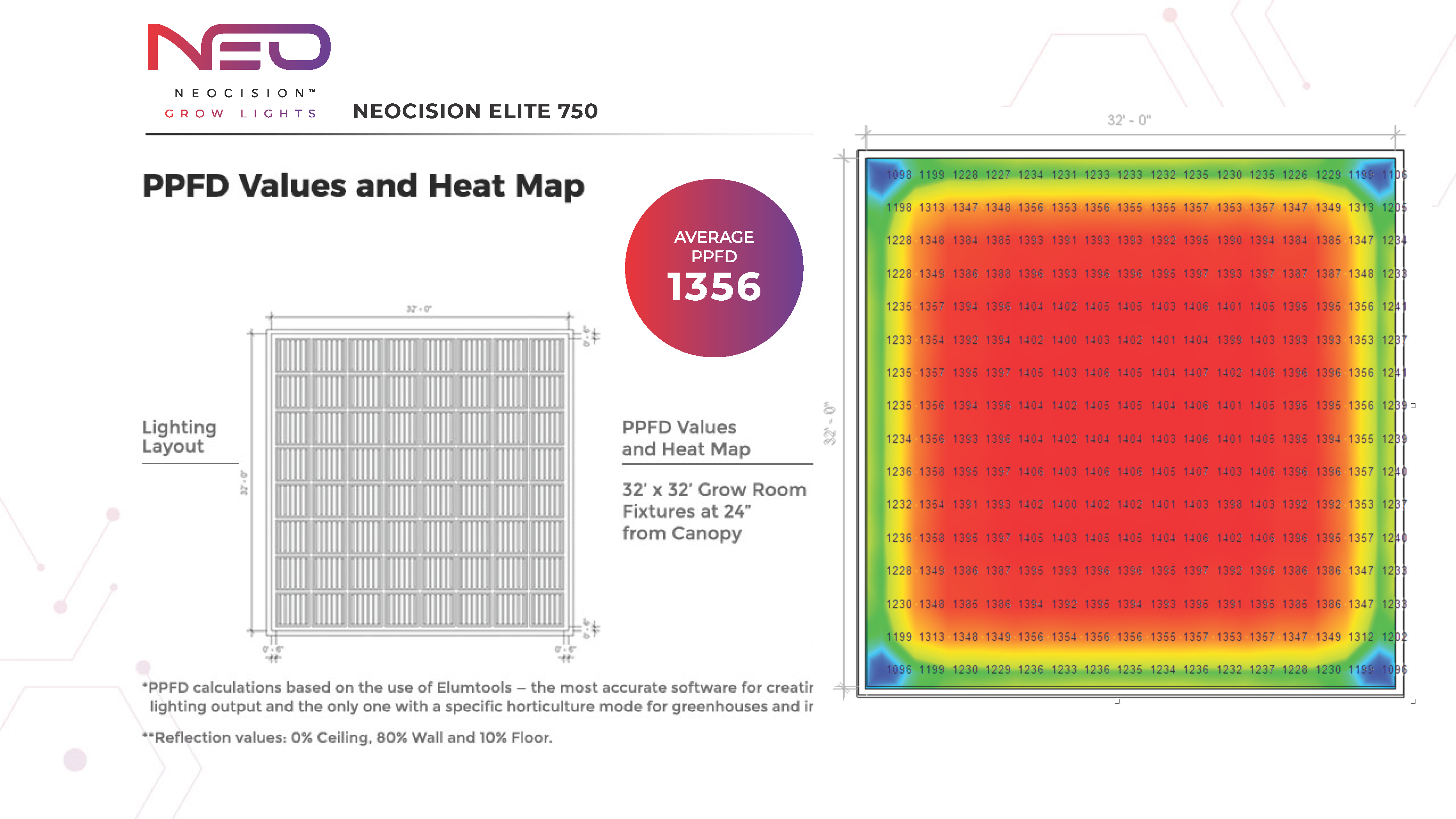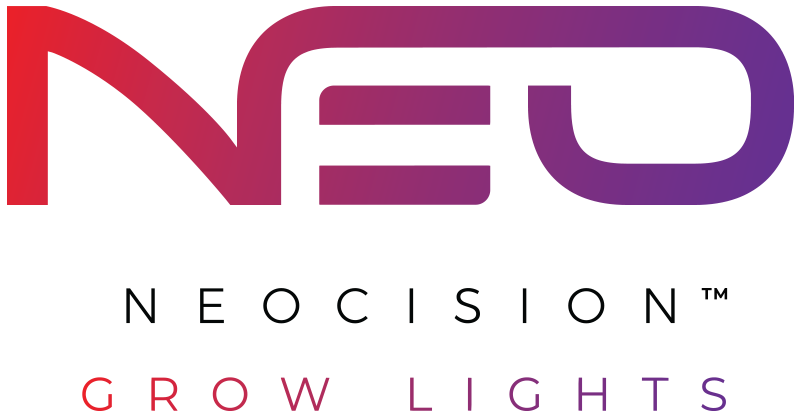
Proper LED grow light design and layout for your indoor cultivation facility will result in maximizing yields with minimum energy consumption.
LEDs are chips, and like all electronic devices that use chips including but not limited to cell phones, computers, and televisions, there have been significant technological advancements over the past few years. Compared to HPS fixtures, today’s LED grow lights can deliver increased levels of full spectrum light, which is so critical for proper growth of cannabis plants. These LED grow lights allow cultivators to increase yields with up to 40% less costs for the ongoing power used for your facility’s lighting and HVAC.
But how can you compare all the new LED grow lights on the market today? How can you separate facts on LED lighting efficacy from unsupported marketing claims?
Before you can design lighting in an indoor, controlled environment, cultivation room, we recommend the following:
Validate LED Grow Lights Using DesignLights Consortium (DLC)
As stated on its website, “The DesignLights Consortium® (DLC) is a non-profit organization with a mission to achieve energy optimization by enabling controllability with a focus on quality, people, and the environment.
As a non-profit, the DLC is committed to improving energy efficiency for commercial lighting throughout North America, and to making a positive climate impact worldwide. It’s our goal to provide a trusted, impartial assessment of the industry’s highest performing lighting products and systems to boost consumer trust and adoption of the technologies that save the most energy.”
DLC is the first and only standards-based organization recognized by utility companies in North America for validation of rebates for horticultural lighting.
You can find LED grow lights from various manufacturers with their third party validated test results in the DLC Horticulture Qualified Products List.If you are considering an LED grow light that is not DLC-listed, we suggest you exercise extreme caution before you purchase them and ask yourself: why has the manufacturer not pursued a DLC listing, which is neither a costly or lengthy process. Lighting claims by manufacturers of non-DLC-listed lights should also be considered unreliable.
Lighting Layouts Should Be Completed Using Horticulture Measurements
There are multiple measurements of light. Lumens (the total amount of light emitted by a light source), Lux (how much light falls on a certain area) and PAR are typically the best-known concepts associated with lighting. For a cultivation facility, it is important you know the difference, because Lux and Lumens are no substitute for PAR. PAR stands for photosynthetic active radiation consisting of the wavelengths of light between 400 nanometers (nm) -700 nm which drive photosynthesis. These independent concepts are extremely important in determining the light output in, for example, offices, sports facilities, or controlled environment agriculture with cultivation lighting.
The most important metrics for LED grow lights are:
- Photosynthetic Photon Flux (PPF) measures the total amount of PAR that is emitted from a lighting fixture each second.
- Photosynthetic Photon Flux Density (PPFD) measures the amount of PAR that lands at a specific location on your plant canopy.
- Photosynthetic Photon Flux Efficacy (PPE) measures how efficient a horticulture light fixture converts electrical energy into photons of PAR. To calculate how efficient a light fixture is at converting electrical energy into PAR, you divide the PPF by the input wattage, to arrive at PPF efficacy . The higher the PPF efficacy, the more efficient the light fixture is at converting electrical energy into photons of PAR.
DLC uses independent third-party lab tests to report PPE as well as expected life expectancy for the LEDs used in the fixture. PPE is required for comparing the efficiency of different manufacturers’ LED grow lights and ultimately the output per fixture.
A best practice in developing the lighting layout for your indoor cultivation facility is to use specific horticulture software that can be provided to your architect and electrical engineer in AutoCad file format, which will lower your cost for drafting. The best tool for lighting layouts is ElumTools from Lighting Analysts.
ElumTools supports a specific mode for horticultural lighting calculations that works in conjunction with AutoCad’s Revit. When ElumTools is set in Horticulture Mode, LED grow lights are assigned output in terms of PPF, or by PPF Factor which can be computed from the spectral power distribution of the light source. All point-by-point calculations in your cultivation rooms will then be expressed in terms of PPFD.
All horticulture lighting companies will provide light plans – but not all know or follow good design principles. Get your lighting layouts provided with the right tools, using the proper measurements for horticulture.
Photosynthetic Photon Flux Density (PPFD) Matters
A proper lighting design considers factors such as the desired light intensity level, the layout of a cultivation environment, the available height, and the light distribution of the fixture.
Using the proper lighting tool, you will receive a report with fixture layouts, distance between the fixture and the plant canopy and average PPFD with minimum/maximum levels of PAR at each area of the canopy.
Beware of lighting layouts that use high levels of wall, floor and ceiling reflection. This is done to increase the reported PPFD and does not exist in the grow rooms, other than walls.
Studies conducted by leading plant scientists have proven this time and time again. A study performed by Outco from San Diego and performed by Dr. Allison Justice provided the following yield results.
Increased yields grew far more slowly between 800 and 1200 PPFD. Trimmed flower weight increased by 9%. This data seems to suggest that 1200 PPFD could be the light saturation point of cannabis, which is also reported by Bruce Bugbee, a thought leader and top scientist in lighting for cannabis. In other words, it may not be worth your while wasting money on more powerful lighting once you hit 1200 average PPFD. (emphasis added)
We highly recommend this Bruce Bugbee video on maximizing yields in cannabis. Read more about PPFD in Measuring Performance of LED Grow Lights
The Outco study, like similar studies, shows a 1% increase in yield for every 5% increase in average PPFD. Don’t take this lightly – 2% increase in yield on 1,000 square feet of canopy can mean $35,000+ in additional revenues per harvest cycle.
Warranty Matters
Warranty is important as it reflects a lifespan on the LEDs that reflect when the LEDs will fall below an acceptable threshold set by DLC for flux output per LED. Decreased output will result in lower PPFD over time – which will be reflected in lower yields for the cultivation facility.
DLC requires a 5-year warranty, however, some manufacturers provide a more limited warranty while still meeting the minimum requirements on the DLC warranty.
It is also important that you receive a warranty from a U.S. based company. This helps ensure that you don’t get a product that delivers lower grade LEDs than they tested. You will have no recourse, not to mention the problems associated with dealing with companies in China or other areas in Asia to rectify any defects and failures that can arise after installation. As an example, a recent case study from HydroFarm showed one company not listed on DLC with an LED grow light HydroFarm bought and had independently tested. The actual output of the fixture was 7.7% less PPF than claimed.
We highly recommend you use a qualified lighting consultant that can provide lighting layouts for LED grow lights. They should use outputs that can be validated on DLC and use ElumTools or other software that has specific horticultural programming.
Randy Shipley is a co-founder and the President of RSX Enterprises and is responsible for sales, marketing, product development and technology. He also leads RSX’s design, build and facility start-up advisory services team, with a focus on assisting cultivators with facility and floor plan design assistance for lighting, benching, HVACD and other critical growing systems. Connect with Randy on LinkedIn


